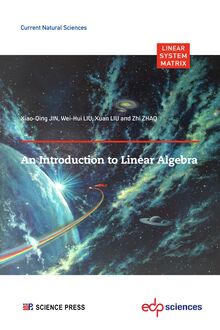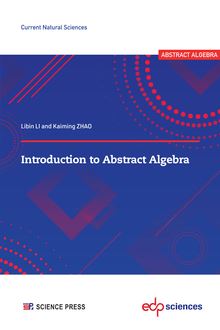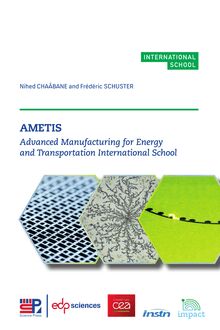Visual Rehabilitation of Stroke , livre ebook
254
pages
English
Ebooks
2024
Obtenez un accès à la bibliothèque pour le consulter en ligne En savoir plus
Découvre YouScribe en t'inscrivant gratuitement
Découvre YouScribe en t'inscrivant gratuitement
254
pages
English
Ebooks
2024
Obtenez un accès à la bibliothèque pour le consulter en ligne En savoir plus
Publié par
Date de parution
27 juin 2024
Nombre de lectures
1
EAN13
9782759834945
Langue
English
Poids de l'ouvrage
9 Mo
A consistent amount of patients with stroke and other brain injuries complain for the damage of their visual field. This defect, called hemianopia, is a dramatic event: half of the world seems to disappear all of a sudden. And the Moon is always crescent or waning. Never full.
Within the current clinical setting, to date there is nothing ophthalmologists can do to return patients the wonderful sight of a full Moon. The Dogma is: “In the brain what is lost is lost”. And the Dogma cannot be broken. Yet, since the past century research has been challenging the Dogma. Investigations reveal that the repetitive stimulation of the blind region of the visual field may restore, albeit partially, the neuronal function, and may improve the scanning ability. This treatise is a translational journey that sets out from the pioneering studies on the effects of brain lesions in wounded soldiers, passes through the mechanisms of spontaneous compensation of hemianopia, continues with the laboratory results, and comes to describing the rehabilitative techniques devised in the last decades.
This fascinating journey, with its shadows, stops and go, reverses, confirmations and denials, has not yet come to an end. But it is firmly determined to re-illuminate the dark side of the Moon in these unfortunate patients. And you, dear Reader, are going to be the traveler.
Preface.The Dark Side of the Moon ............................... VII
CHAPTER 1
Recalls of Neuro-Anatomy of the Visual Pathways .................... 1
1.1Posterior Cerebral Artery .................................. 3
1.2 The Visuotopic Mapping of the Visual Cortex ................... 4
CHAPTER 2
Damage to the Visual Pathways: Perimetric Patterns .................. 9
2.1 Macular Splitting, Macular Sparing, and Foveal Sparing ........... 12
2.2 The Monocular Temporal Crescent ........................... 15
2.3 Concluding Remarks ...................................... 17
2.4 Visual Hallucinations in Hemianopia .......................... 19
CHAPTER 3
Perceptual and Oculomotor Requirements for Reading ................. 23
3.1Fixations and the Visual Span .............................. 23
3.2Saccades ............................................... 25
3.3Neuro-Anatomy of the Oculomotor Control..................... 27
CHAPTER 4
Hemianopic Alexia ............................................ 33
4.1Impaired Visual Processing of the Word Due to the Hemifield Loss (Reduced Visual Span) .................................... 34
4.2Impaired Visual Processing of the Word Due to the Defective Saccadic/Fixation Pattern ................................. 35
4.3 Visual Field Defect or Cortical Damage: Which is Responsible for the Abnormal Oculomotor Pattern in Hemianopic Dyslexia? 39
4.4 The Role of Contrast Sensitivity and Visual Attention ............ 40
4.5 Quadrantanopia, Paracentral Defects, and Relative Hemianopia ..... 42
CHAPTER 5
Visual Hemineglect and Neglect Alexia ............................. 45
5.1 Egocentric and Allocentric Coordinates........................ 49
5.2 Differentiating Hemineglect from Hemianopia ................... 50
5.3 Ocular Movements in Neglect ............................... 54
5.4 Altitudinal Neglect ....................................... 57
5.5 Size Distortion in Neglect .................................. 57
5.6 Neglect Alexia .......................................... 57
5.6.1Ocular Movements in Neglect Alexia .................... 60
5.7 Rehabilitation of Visual Hemineglect and Neglect Alexia ........... 61
5.7.1 Prism Adaptation .................................. 64
5.7.2 Effect of Prism Adaptation on Reading .................. 70
5.7.3 Optokinetic Training ................................ 70
5.7.4 Compensatory Prisms ............................... 71
CHAPTER 6
Visual Exploration in Hemianopia ................................ 73
6.1Scanning Behavior of Hemianopic Patients in Controlled Experimental Conditions................................... 74
6.1.1 Visual Field Defect and Cortical Damage: Which is Directly Responsible for the Oculomotor Pattern in Hemianopic Visual
Exploration?...................................... 77
6.2 Displacement of the Egocenter in Hemianopes................... 78
6.2.1 Effect of the Displacement of the Egocenter on the Scanning Behavior of Hemianopic Patients ....................... 79
6.3 Size Distortion in Hemianopia ............................... 81
CHAPTER 7
Spontaneous Recovery and Compensation of Hemianopia ............... 83
7.1Spontaneous Recovery of the Visual Function Due to Visual Field Restoration............................................. 83
7.2 Spontaneous Recovery of the Visual Function Due to Oculomotor Adaptation............................................. 85
7.3 Spontaneous Recovery of Reading Due to Oculomotor Adaptation ... 87
7.3.1 Eccentric Fixation .................................. 88
7.4 The Effect of the Central Damage on the Development of Spontaneous Oculomotor Adaptation to Visual Search and Reading . . 89
7.5 Compensation of Hemianopic Patients with Hemineglect........... 89
CHAPTER 8
Rehabilitation of Hemianopia: Visual Restitution ..................... 91
8.1 Rationale of Visual Restitution: Cortical Plasticity ............... 91
8.1.1 Cortical Reorganization After Reversible Cortical Deafferentiation .................................... 92
8.1.2Cortical Reorganization After Permanent Retinal Scotoma .... 93
8.1.3Cortical Reorganization After Cortical Damage ............ 94
8.1.4Anatomy of Cortical Plasticity ......................... 94
8.1.5Recovery After Training in Animals ..................... 96
8.2 Vision Restitution in Humans: Training at the Transition Zone ...... 97
8.2.1Repeated Thres hold Measurements across the Transition Zone (Zihland von Cramon, 1979)...................... 98
8.2.2Repeated Threshold Measurements across the Transition Zone and Subsequent Saccadic Training (Van der Wildt
and Bergsma, 1998) ................................. 100
8.2.3Visual Training with the Goldmann Perimeter (Bergsmaand van der Wildt, 2010) ..................... 101
8.2.4 The Training Procedure of Poggel and Colleagues (2004,2008a) ...................................... 102
8.2.5 The Computer-Assisted Training of Julkunen and Colleagues (2003)........................................... 102
8.2.6Training of the Transition Zone with the Lubeck Reaction Perimeter(LRP: Schmielau and Wong, 2007).............. 103
8.2.7 The Vision Restoration Therapy of Kasten and Sabel (VRT: Kasten et al., 1998a) ........................... 104
8.2.8 The Vision Restoration Training of Schreiber et al.(2006) and Romano et al. (2008)............................. 107
8.2.9 Counterevidence and Controversies About Visual Restitution . . 108
8.2.10 The Functional Studies and the Clue of Hallucinations...... 111
8.2.11 Predictors of the Outcome of Vision RestorationTherapy ... 114
8.2.12 The Discrepancy between Objective vs. Subjective Improvement ..................................... 116
8.3 Vision Restitution in Humans: Training of the Blind Hemifield ...... 118
8.3.1 Blindsight and Its Training-Rationale.................... 118
8.3.2 The Flickering Rehabilitation Protocol of Hyvärinen, Raninen, and Colleagues (2002, 2007) ................... 120
8.3.3 The Effect of the Flickering Stimulation of the Blind Field on the Cortex ...................................... 122
8.3.4 Flickering Rehabilitation of the Blind Field: The Study of Roth and Colleagues (2009) ......................... 126
8.3.5 The Selective Stimulation Training of Sahraie et al.(2006) .... 127
8.3.6 The Saccadic Stimulation of the Blind Hemifield of Zihl and von Cramon (1980, 1981, 1985) ..................... 128
8.3.7 Visual Restitution Associated with Pharmacotherapy (Widdig et al., 2003) ................................ 133
8.3.8 Visual Restitution via Training of Motion Perception (Huxlin et al., 2009) ................................. 133
8.3.9 Vision Restitution via Extrastriate Stimulation (Jobke et al., 2009) ................................. 135
8.4 Training Blindsight with Audiovisual Stimulation................ 150
CHAPTER 9
Rehabilitation of Hemianopia: Visual Compensation................... 157
9.1 The Visual Search Training of Kerkhoff and Colleagues (Kerkhoff et al., 1994, 1992b)............................... 157
9.2 The Saccadic Search Training of Zihl (Zihl, 1995b)............... 159
9.3 The Saccadic Search Training of Nelles and Colleagues (Nelles et al., 2001)....................................... 159
9.4 The Portable Search Training System of Pambakian et al.(2004) .... 160
9.5 The Digits Search Training of Roth et al. (2009)................. 161
9.6 The Effect of Visual Search Training on Saccade and Fixations ...... 167
9.7 The Effect of Visual Rehabilitation (Saccadic Training)on the Cortex 168
CHAPTER 10
Rehabilitation of Hemianopic Alexia............................... 169
10.1 Optokinetic Reading Training (ORT)........................ 169
10.2 Saccadic Reading Training (SRT)........................... 171
10.3 Factors Influencing the Outcome............................ 177
CHAPTER 11
Rehabilitation of Hemianopia: Visual Substitution.................... 179
11.1 Mirrors ...............................................179
11.2 Prisms. Premise: The Apical Scotoma........................ 181
11.3 Binocular Full-Field Prisms................................ 182
11.4 Binocular Sector Prisms.................................. 182
11.5 Monocular Sector Prisms.................................. 185
11.5.1 The Trimmed Prismatic Sector of Lawton Smith (Lawton Smith et al., 1982) .......................... 186
11.5.2 The Visual Field Awareness System (VFAS: Gottlieb,1988). . 186
11.5.3 The Procedure of Peli (EP Prisms: Peli, 2000)............ 188
11.5.4 The Oblique EP Prismatic Sectors..................... 192
11.5.5 Limitations and Remarks of the EP Method.............. 194
11.6 The Multiplexing Prisms of Peli and Jung (2017)............... 197
Conclusion.................................................. 199
Appendix. Pure Alexia......................................... 205
References.................................................. 217
Publié par
Date de parution
27 juin 2024
Nombre de lectures
1
EAN13
9782759834945
Langue
English
Poids de l'ouvrage
9 Mo














